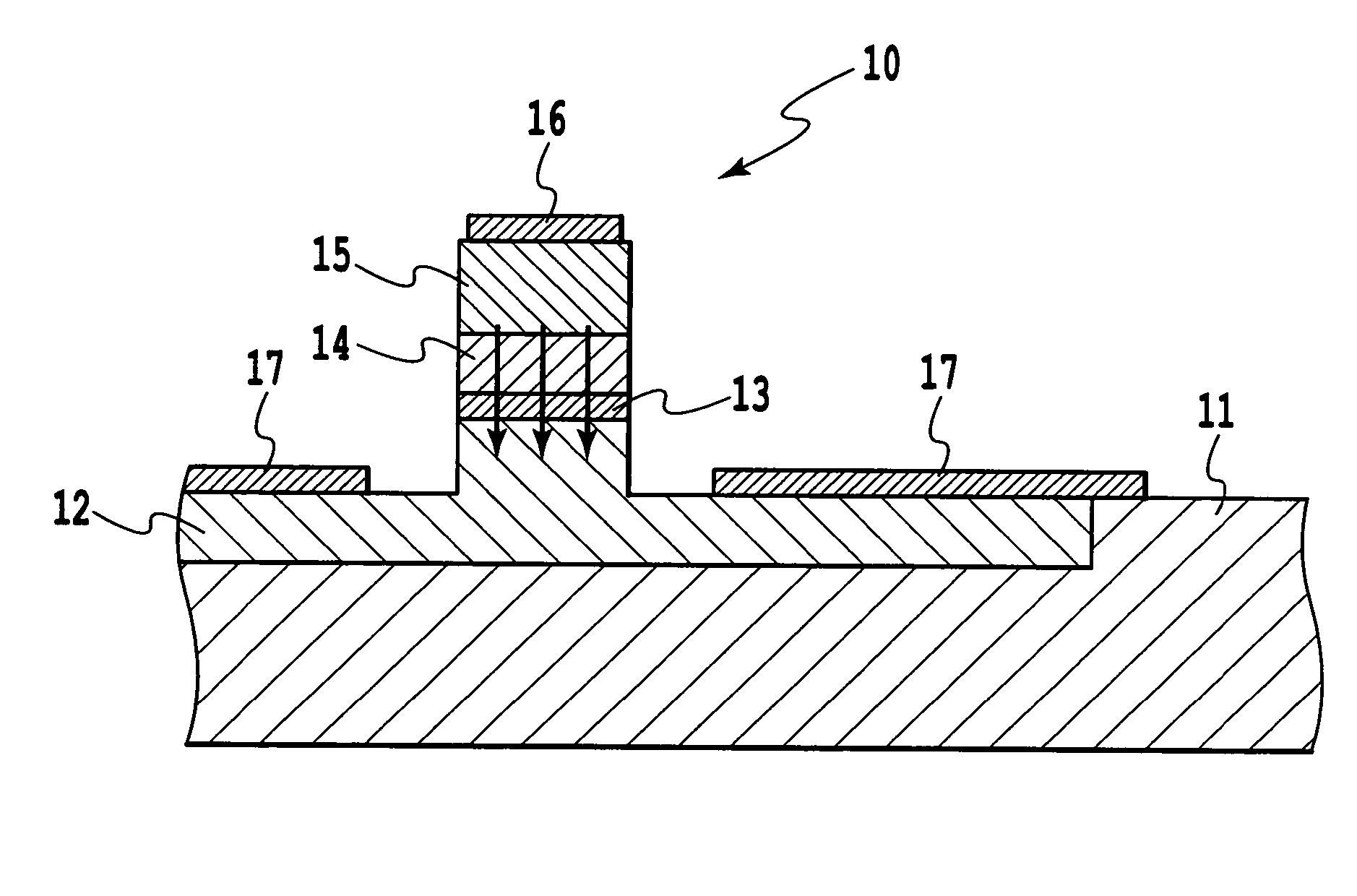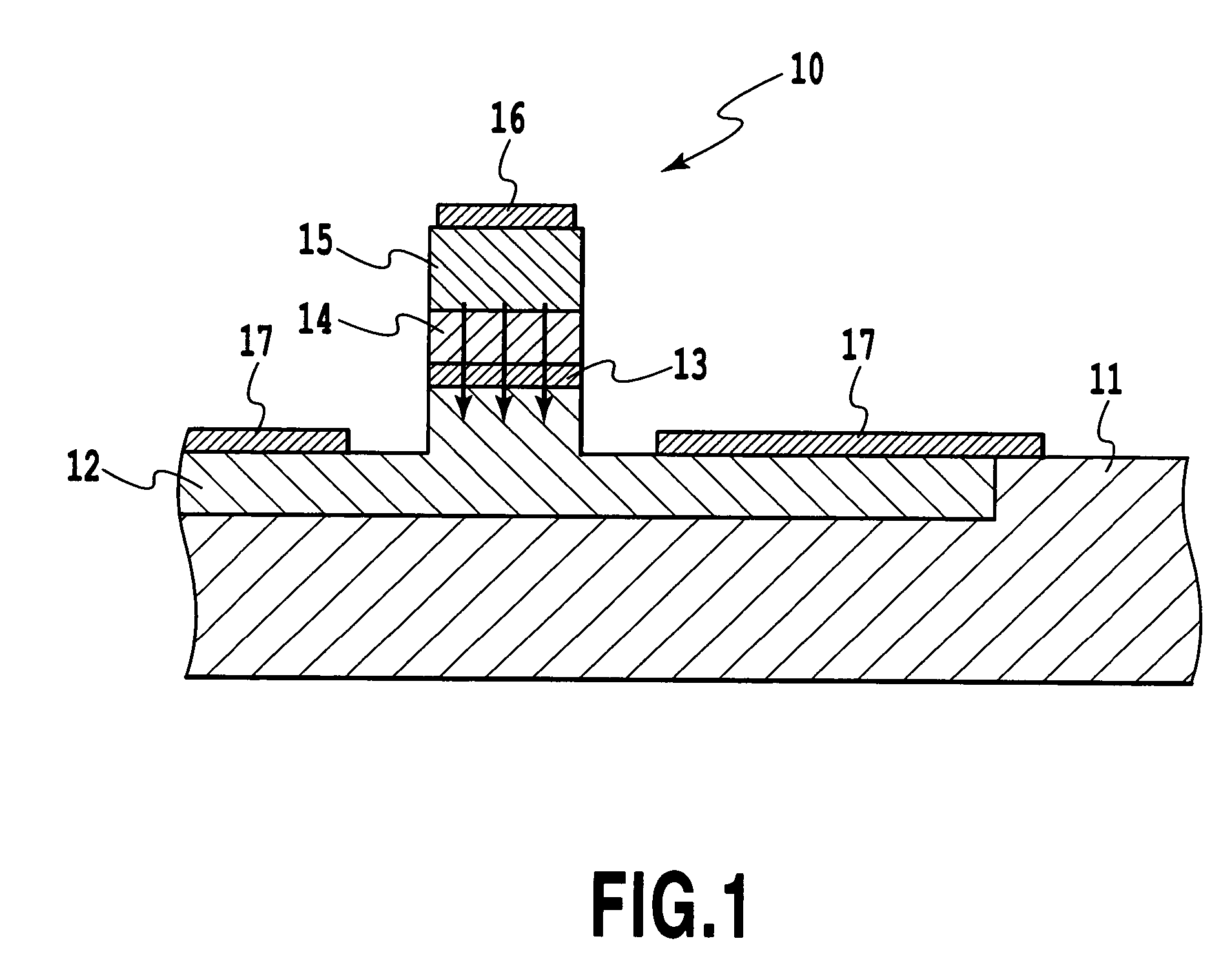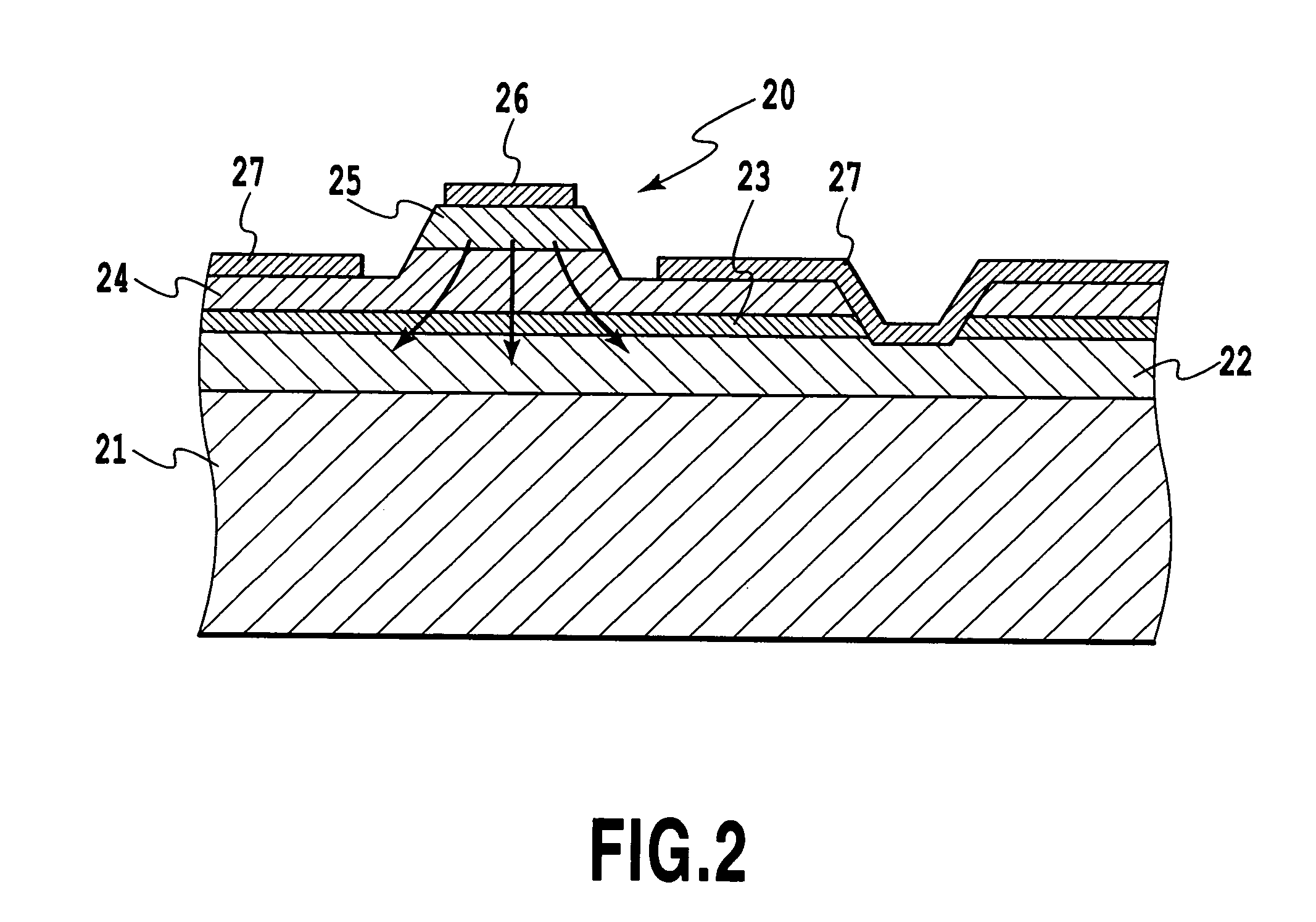Semiconductor optical modulator
a technology of semiconductor parts and optical modulators, applied in optics, instruments, nanotechnology, etc., can solve the problems of deteriorating waveform of optical signals transmitted through optical fibers, and affecting the performance of optical modulators. achieve the effect of high efficiency
- Summary
- Abstract
- Description
- Claims
- Application Information
AI Technical Summary
Benefits of technology
Problems solved by technology
Method used
Image
Examples
first embodiment
[0071]FIG. 1 is a schematic sectional view of a waveguide of an InP-based multi-quantum well semiconductor optical modulator according to a first embodiment, showing a cross-sectional structure of a part, to which an electric field is applied, of the waveguide.
[0072]The semiconductor optical modulator according to this embodiment has an optical waveguide structure obtained by processing a layered structure, in which an n-InP cladding layer 12, an optical waveguide core layer 13, an SI-InP cladding layer 14, and an n-InP cladding layer 15 are sequentially laminated on an SI-InP substrate 11, so as to be shaped like a mesa according to an etching process.
[0073]The semiconductor optical modulator according to the first embodiment is a high-mesa waveguide structure 10 in which an etching operation is applied to a part under the optical waveguide core layer 13 (in this embodiment, to the n-InP cladding layer 12 that is a layer placed under the optical waveguide core layer 13).
[0074]The s...
second embodiment
[0091]FIG. 5 shows a schematic external appearance of a Mach-Zehnder type optical modulator according to a second embodiment. As shown in FIG. 5, the Mach-Zehnder type optical modulator 60 includes a 2×2 multi-mode interference (MMI) type coupler 68a that is used to divide input light into two light beams, two phase modulating waveguides 69a and 69b that modulate the phase of each of the divided light beams based on an applied voltage, a 2×2 multi-mode interference type coupler 68b that combines modulated light beams together, a signal electrode 66 used to apply an electric field to the phase modulating waveguides 69a and 69b, and a ground electrode 67, which are formed on a substrate. Herein, the length (phase modulation region) L of each of the phase modulating waveguides 69a and 69b is 3 mm.
[0092]FIG. 6 shows a cross-section of a phase modulating waveguide of the Mach-Zehnder type optical modulator according to the second embodiment. As shown in FIG. 6, the Mach-Zehnder type opti...
third embodiment
[0116]FIG. 11 is a schematic sectional view of a waveguide of an InP-based multi-quantum well semiconductor optical modulator according to a third embodiment. FIG. 11 shows a cross-sectional structure of an electric-field-applied portion of the waveguide.
[0117]The semiconductor optical modulator according to the third embodiment has an optical waveguide structure obtained by processing a layered structure, in which an n-InP cladding layer 42, an SI-InP cladding layer 48, an optical waveguide core layer 43, an SI-InP cladding layer 44, and an n-InP cladding layer 45 are sequentially laminated on an SI-InP substrate 41, so as to be shaped like a mesa according to an etching process.
[0118]The semiconductor optical modulator according to the third embodiment differs from the modulator according to the first embodiment in the fact that the layered structure is formed such that the SI-InP cladding layer 48 is placed between the optical waveguide core layer 43 and the n-InP cladding layer ...
PUM
| Property | Measurement | Unit |
|---|---|---|
| thickness | aaaaa | aaaaa |
| length | aaaaa | aaaaa |
| length | aaaaa | aaaaa |
Abstract
Description
Claims
Application Information
 Login to View More
Login to View More - R&D
- Intellectual Property
- Life Sciences
- Materials
- Tech Scout
- Unparalleled Data Quality
- Higher Quality Content
- 60% Fewer Hallucinations
Browse by: Latest US Patents, China's latest patents, Technical Efficacy Thesaurus, Application Domain, Technology Topic, Popular Technical Reports.
© 2025 PatSnap. All rights reserved.Legal|Privacy policy|Modern Slavery Act Transparency Statement|Sitemap|About US| Contact US: help@patsnap.com



